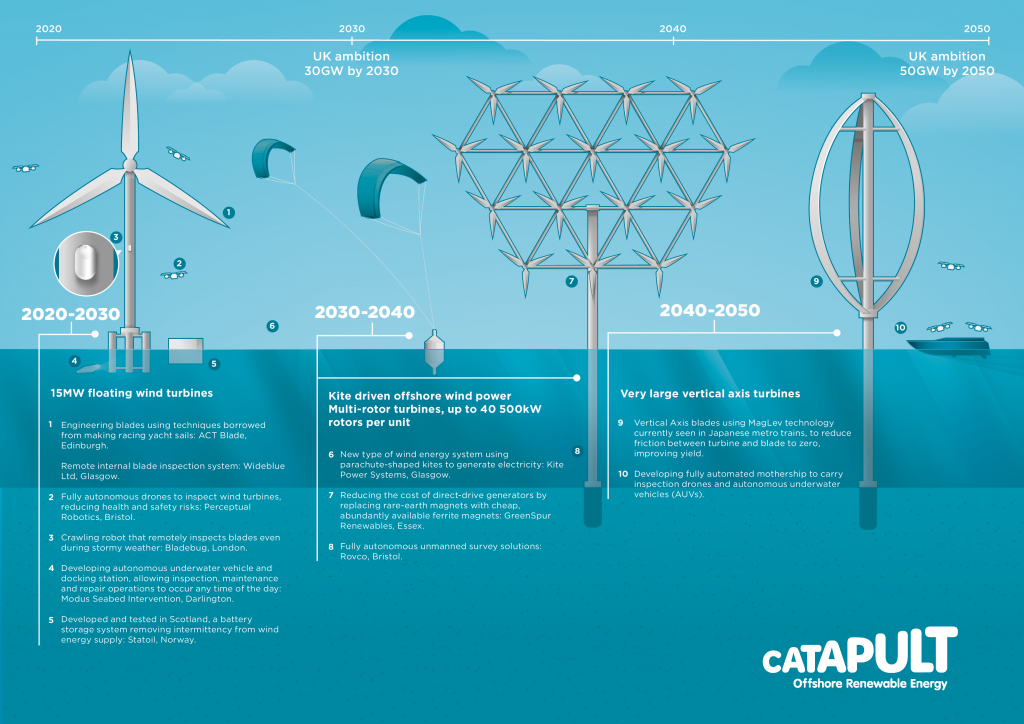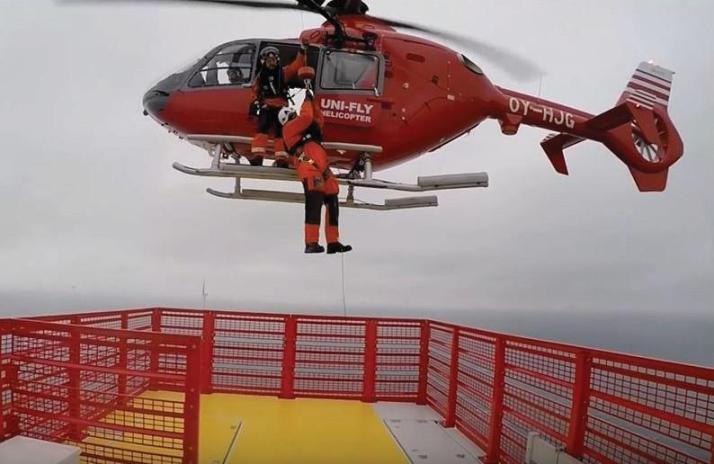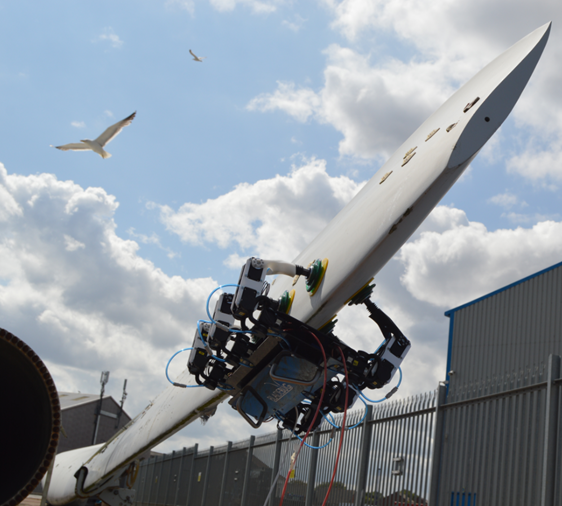
Our Operational performance Director Chris Hill provides an overview of what an offshore wind farm may look like in the future to help those supplying the industry with goods and services to identify industry needs and associated skills requirements.
Offshore wind farms constructed between now and 2030 are unlikely to look radically different from those we observe at present. Turbine rated capacities look likely to continue upwards with at least 15MW machines expected by the end of the next decade. Blades themselves will be larger – in excess of 110m – and novel materials will reduce the cost of the repairs and maintenance. There is also a general trend for increasing rated capacity of wind farms, further from shore, with several projects soon to exceed gigawatt scale and be more than 100km from shore.
The type of foundations deployed in northern Europe are likely to continue to be predominantly monopile, followed by a significant minority of projects using jackets. With strong appetite for local construction, it may be that gravity base foundations find some application. While restricted to a relatively narrow range of soil conditions, suction bucket foundation technology is maturing and has now been deployed on several projects and again this may be relevant to the geology at some projects. Development beyond northern Europe, in greater water depths, may see a greater mix of jackets, gravity base and novel foundation designs.
Floating turbine substructures are, at present, a relatively immature technology. The precise deployment pipeline for floating wind contains much lower volumes than fixed foundations at present and is less certain, but once matured, floating wind offers the potential to unlock sites with higher wind resource. Significant rollout of floating structures is not expected before 2030.
With projects further from shore, HVDC transmission technology is likely to be more commonplace. Storage solutions currently being developed in the UK and around the world could help end intermittency issues inherent with existing wind power technology.
Construction methodologies and equipment used during installation of foundations and turbines has continually improved since the early days of offshore wind. Initially, vessels from the Oil & Gas sector were used in the construction stage. However, as the specific needs and requirements for current and future deployments became better understood, specifically designed vessels entered the market. Continued development of construction vessels will be required to accommodate ever increasing nacelle weight and tower heights, in conjunction with commercial pressures to increase the weather window for continued operations.
As wind farms move further from shore, we expect to see the increased use of feeder barges to maximise the utilisation of the installation vessel on the core installation tasks, hence decreasing construction costs, which will offset the additional risk of increased offshore lifts.
To date, operational offshore wind farms have mainly been accessed by teams who work from crew transfer vessels (CTVs) under 25 m in length carrying around 12 passengers. Such vessels will travel to and from the operations and maintenance (O&M) port each day. To transfer personnel, the CTV pushes on to a boat landing and technicians must then climb a ladder from the vessel to the turbine. The sea states in which this transfer is considered safe are relatively limited, commonly around 1.5m significant wave height. In order to mitigate the ‘commuting time’ associated with trips to and from shore each day, and also to enable the use of ‘walk to work’ access systems which remove the requirement to climb ladders, there has recently been a tendency for new offshore wind farms to embrace a logistics concept centred around the use of a service operations vessel (SOV).
Such vessels are much larger in size, offer overnight accommodation for several weeks of endurance and will include a gangway or other motion compensating system to enable access to the turbine in higher sea states, perhaps as much as 3m significant wave height. As well as changing the dynamics of day to day operations and striving to provide a larger number of technician working hours on each turbine, these vessels may fundamentally alter the logistics and management concepts in use, with marine coordination and some spare parts inventory moving from onshore to offshore locations provided by these vessels.
In the near future, it appears likely that SOVs will continue to be adopted by more sites, particularly where they have been integrated into the logistics planning since the concept design stage. They will be particularly attractive for potential sites where the distance to port is more than two hours transit by CTV. Previously, distance from shore would have a dominant influence on the economics of offshore operations, but with the widespread adoption of SOVs and an associated developing track record of providing offshore accommodation, the distance from port may not be as critical for future projects as it once was.

Helicopter support for offshore wind is still at an early stage. The first deliveries of aircraft specifically for offshore wind support were made in 2015, and it’s estimated that there are no more than 30 aircraft worldwide currently dedicated to supporting offshore wind. As with SOVs, the potential for the wider adoption of helicopters for wind farms further from shore is likely, especially as turbine ratings increase and the economics of such transportations become more favourable.
Major component exchange or other maintenance which requires offshore heavy lift is also an area where some progress is likely to be made in the next few years. At present, for any lifting greater than the capacity of turbine-mounted cranes or davits, and certainly once a lift of more than around 10 tonnes is necessary, jack up vessels will be mobilised to conduct lifting to support maintenance.
It is anticipated change in this area will be driven by reducing rates for previous generation installation vessels, which whilst capable of 2–4MW turbine installations, struggle to compete with lifting capacities required for more modern projects using larger machines. Alongside the adoption of previous generation installation vessels to maintenance tasks, there is also a significant appetite for alternative methods to conduct maintenance lifting operations. It is possible that new vessels and/or lifting equipment will be developed and come to market. Operators are keen to find alternative means to complete the lifting of gearboxes, generators or turbine blades in the maintenance phase.
At present, most offshore wind maintenance activity is reactive, with most sites still expending the majority of their effort reacting to unplanned or unforeseen events. Considerable effort is being put into finding ways to improve this balance and fundamentally shift maintenance activity from largely reactive in nature to being mostly proactive with a small reactive element. More established industries generally tend to conduct the majority of their maintenance in a planned, proactive fashion.
One area which is of particular relevance is a trend for increasing reliance on data and analytics. Technology and skills in this area are evolving rapidly, and as with other industries the impact on offshore wind maintenance is already significant. It looks likely that developments in this area will continue apace, and that the depth of understanding of asset condition and performance will be significantly greater for future offshore wind projects than for those already in operation today.

The application of robotics and autonomous solutions is another cross-industry trend that has significant relevance to offshore wind. It is likely that future projects will rely heavily on humanless methods of access, particularly to the most challenging environments. It is anticipated that remote and autonomous solutions to inspect and survey subsea assets will be a relatively mature technology by the mid-2020s. Unmanned aerial inspection, particularly of blade surfaces, is also likely to be commonplace. More development will be required to develop robotic solutions capable of undertaking actual maintenance tasks, but it is possible that, particularly for straightforward and repetitive tasks, that technology will begin to displace physical human activity offshore. ORE Catapult is already working with a number of technologies in this area, including Bladebug’s innovative blade crawler. Resembling a robotic spider, this robot could significantly reduce the cost and risk of blade maintenance activities, operating when the wind is too strong for flying drones.
As well as the continued requirement for all engineering disciplines, digitalisation and the adoption of Industry 4.0 is likely to be an area of considerable change in offshore renewables in the coming years, with a corresponding demand for those with appropriate skills sets. Development skills will continue to be needed, with expertise in the following areas continuing to be required: planning; legal; stakeholder engagement; ecology; ornithology; metocean; geotechnical, and archaeological. Wind farm designs are likely to remain significantly similar around the world during this period, creating significant export opportunities for those with appropriate skills.
By 2040, turbines could be accompanied with a new type of technology. There could be extensive roll out of a floating kite power generator, such as that being developed by Kite Power Systems (KPS) in Glasgow, which uses parachute-shaped kites to harness power in a wider swept area than turbines can. Due to the lightweight nature of the kites, they can even generate power when wind is light.
Turbines could look different, with designs moving from the single-rotor designs we see today to arrays of multiple rotors on a single structure, drastically reducing installation and maintenance costs – as well as generating up to 20MW using small 500kW turbines, and those turbines could benefit from even cheaper generators. Expensive rare-earth magnets could be replaced by cheaper, more available ferrite magnets – a technology being developed by Essex-based SME Greenspur Renewables.
The rise of the robots will continue with the introduction of the ‘Mothership’. These are fully autonomous boats that can transfer crew to turbines as well as more advanced robots and drones, acting both as a charging station and data-hub. These will allow for even more complex tasks and repairs to be carried out than ever before.
Offshore technicians of the future will be practical and highly trained in all aspects of turbine operations, whilst also being physically capable to meet the demands of vessel and helicopter transfers. It is likely that technicians’ health and wellbeing will be constantly monitored, and they will have access to high quality communication systems that will enable real-time technical support. There will be an increased dependency on robotics and autonomous systems to help with inspection and the transfer of spare parts or tooling, significantly improving the efficiency of the O&M process and reducing the number and frequency of unsuccessful interventions.
Wind turbines will continue to grow in size and 200m blades could be the norm in single-rotor designs. Due to their size, these blades will need to use an entirely new construction method, with flexible blade structures used to reduce the likelihood of breakage. Secondary rotors could start to be used on the tip of blades where, because of their high speed, they will generate even more power from every gust.
Vertical axis turbines, still in their infancy, may start to address the challenges current designs pose in weight, with larger traditional blades becoming less feasible on a tower structure. These vertical axis blades will have numerous other benefits, such as being able to generate power no matter which direction the wind is blowing in.
This technology could benefit from the MagLev technology currently used for metro trains in Japan. Used in tandem with vertical axis turbines, this could reduce the friction between the turbine and the blade to zero, allowing greater yield by enabling generation with even less wind.
